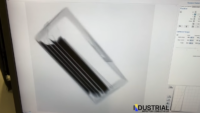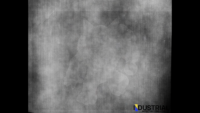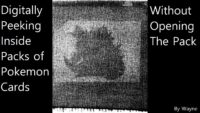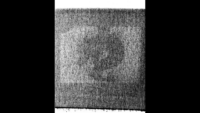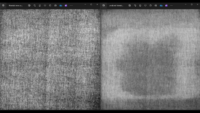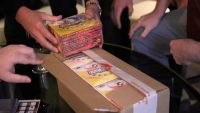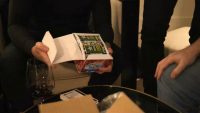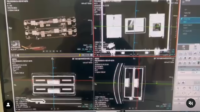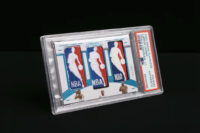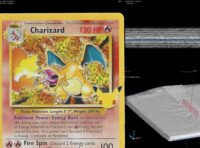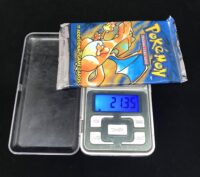Company Using X-Rays to Identify Foil Cards in Sealed Pokemon TCG Products: An Interview with Industrial Inspection
Over the past month, three separate videos have surfaced demonstrating that X-rays can identify foil cards inside sealed TCG products. This has caused quite a panic in the collecting sphere. This method was not known to collectors or even industry experts, although some fans have joked about the possibility for decades.
On June 26th, a Michigan company named Industrial Inspection published a case study showing how their CT machine can identify foil cards inside Pokemon products. The company uses CT scans to ensure automotive, aerospace, and medical equipment meet a manufacturer's standards.
"We had no intention of using our technology to disrupt the Pokemon space," said the company's metrology manager, Brad K., in an interview with PokeBeach. "Our company specializes in ultra-high accuracy quality control. Our primary focus is automotive and aerospace. We use x-rays and CT scans to inspect parts without destroying them."
"We just wanted to scan some Pokemon cards to demonstrate the accuracy of our equipment. X-rays are good at seeing different densities. We had this idea of using a Pokemon card to prove we could differentiate between its different materials, such as the card's razor-thin foil layer."
CT scans are large multimillion dollar machines used in hospitals to "see" the insides of a body. X-ray beams are aimed at a patient and quickly rotated around their body, producing signals that are turned into cross-sectional images, or "slices."
Industrial Inspection's machines work a little differently. Instead of the X-ray revolving around the subject, the source is static and the subject rotates. Thus, a CT scan can easily identify the foil layer of a Pokemon card inside a product.
Following Industrial Inspection's study, another video surfaced on July 16th from Ahron Wayne, an engineer who works in the X-ray field. Over the last year he rebuilt a 30 year old CT scanner for $1,500 and used it to identify foil cards inside Pokemon packs. Wayne revealed his project after Industrial Inspection posted their case study:
"I was on the fence about whether or not to keep this secret -- the immediate instinct many people have, along with whether this works for scratch-off lottery tickets (no), is to buy packs, look inside, and keep just the good ones. This is really icky, and part of what inspired me to apply for a patent (and then keep it secret while I figured out what to do)."
Wayne's video reached nearly 90,000 views, bringing awareness of CT scans to the collecting sphere.
Now Pandora's Box has been opened -- or rather, scanned. Collectors now know you can scan TCG products without opening them. The Meowth is out of the bag.
Over the last month, hobbyists have been debating how CT scanners may disrupt the collectibles industry. Others are suggesting a CT scanning service could be used to authenticate booster boxes. (To avoid another G.I. Joe situation.) Fake products have been on the rise in recent years, especially for vintage products.
"This isn't something we were trying to kill a market with" Brad K. explained. "The idea of collecting cards is the excitement of opening a pack and getting a card because it's rare. Using a CT scanner is very disruptive to that. But if this is something our company stumbled upon without even trying, how many others have been doing this in secret?"
Indeed, a video posted to Instagram on June 24th demonstrates this. A CT scan peers inside $27,000 cases of basketball cards produced by Panini, a sports trading card game company. The user is able to identify an NBA Logoman card inside — a type of sports card worth six to seven figures because it literally features pieces of a player's jersey.
The user, who is not a native English speaker, captioned their video with a foreboding message: "[Since] Panini's NBA [license] is about to expire, I hereby disclose a secret [in the sealed product] industry, so that consumers can see how to 'unbox without damage' through [CT scans]. Unscrupulous merchants are [looking for Logoman cards] without loss!"
It's unclear how widespread the use of CT scans may be for TCG products. There are YouTube videos dating back to at least last year demonstrating the technique.
To this end, Industrial Inspection has announced they are now offering a CT scanning service for TCG products. "We pivoted our standpoint from, 'Hey this is pretty cool but we don't want to mess with it' to 'We should play the role of making this accessible to all people to level the playing field.'"
The company will charge $75 to scan a booster pack. They also plans to offer booster box scanning in the future. This price tag would obviously limit usage to vintage products, which can easily cost hundreds to thousands.
When asked how TCG companies can defeat a CT scanner, Brad K. shared there are methodologies that could be implemented in future products. "When you're out in the sun, you get a sunburn. If a pack has received x-ray radiation, manufacturers could employ certain techniques to reveal a mark."
As of posting, Industrial Inspection has not been contacted by any card manufacturers, including TPCi.
In the past, it was fairly easy to weigh a booster pack to determine if it contained a heavier foil card. TPCi began countering this practice a few years ago by making the code cards in these packs weigh less, thus equalizing the weight of all packs. If CT scanning becomes a noticeable problem, there's no doubt TPCi will take action.


